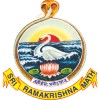About Jhargram

Jhargram is a district in the state of West Bengal, India. It was formed on 4 April 2017, after splitting from the Paschim Medinipur district as the 22nd district of West Bengal. The district has its headquarters at Jhargram. Jhargram is famous for its wooded beauty and topography culminating in the hill ranges of Belpahari, Kankrajhor to the north and Subarnarekha to the south. It is a favorite destination for people who love forests. The ancient temples, royal palaces, and folk tunes and rhythms make this area attractive.
Jhargram is located at 22.45° N 86.98° E. It has an average elevation of 81 metres (265 feet). The weather, like much of Bengal, is extremely humid and tropical. Temperatures can reach as high as 46 ° C in the hot and dry months of May and June but can plummet to 4 ° C in the chilly nights of December and January.
Jhargram district covers an area of 3,037.64 km2 and had a population of 1,136,548 in the 2011 census. 96.52% of the total population was rural and only 3.48% was urban population. 20.11% of the total population belonged to scheduled castes and 29.37% belonged to scheduled tribes. The literacy rate is 70.92%
History
Legend says that around 1592 CE, Raja Man Singh of Amber had come to conquer Bengal on behest of Mughal Emperor Akbar the Great from Rajputana. He appointed one of his loyal officers in the army, Sarveshwar Singh, to defeat the local rulers of the region known as Junglekhand. This area is also mentioned in Ain-i-Akbari as Jharikhanda, and it was populated by the Santhal, Munda, Bhumij, Kudumi Mahato and Lodha people groups. The area belonged to the Mal Raja. The Mals were ancient warriors and were powerful people in the eastern part of India since the time of the Mauryas and the Guptas.
Sarveshwar Singh, together with the Rajput military force and cavalry, invaded the deep forest and vanquished the Mal rulers. Hence, he adopted the surname, Malla Deb. Raja Man Singh was appointed the Governor of Bengal, Bihar, and Orissa by the Mughal Emperor. After the campaign, he decided to return to Rajputana and granted Mansabdari of the 1200 km square Junglekhand region to Sarveshwar Singh as a reward.
The first fortress was supposed to have existed in Old Jhargram. Sarveshwar Singh was the founder of the Jhargram kingdom, and he belonged to the Chauhan clan of Rajputs from Fatehpur Sikri in Rajputana. He took the title of Raja and named the state capital Jhargram, which means a forest village which is surrounded by walls and canals.
Jhargram remained an independent kingdom until 1793, when the kingdom was conquered by the British and was reduced to a Zamindari estate under the law of primogeniture, and the ruler was given the title of Raja. Raja Raghunath Malla Deb was the last ruler of Jhargram.
Culture & Heritage
Jhargram is the rich place of Folk Culture. A unique cultural heritage developed here in the form of folk dance, songs etc. centering different believes, rituals, social programs. Some of the main folk dance and folk song of Jhargram are Bhuang Dance, Chang Dance, Chhou Dance, Pata Dance, Langrae Dance, Ronpa, Jhumur Song, Bhadu Song, Tusu song. Some of the main festivals of this area are Tusu Parab,Baha Parab, Karam Puja, Bhadu Utsav, Badna Parab which bearing the cultural heritage of this area. Different festivals, Folk Dance and folk songs which are tightly related to the daily life makes this place unique.
For more information, please contact, https://jhargram.gov.in/ and https://en.wikipedia.org/wiki/Jhargram
